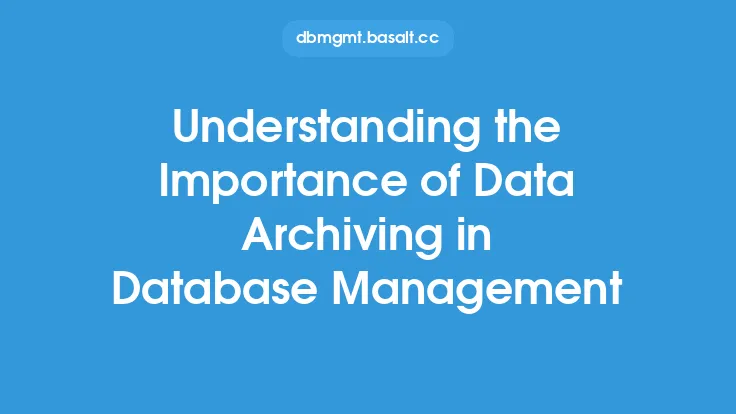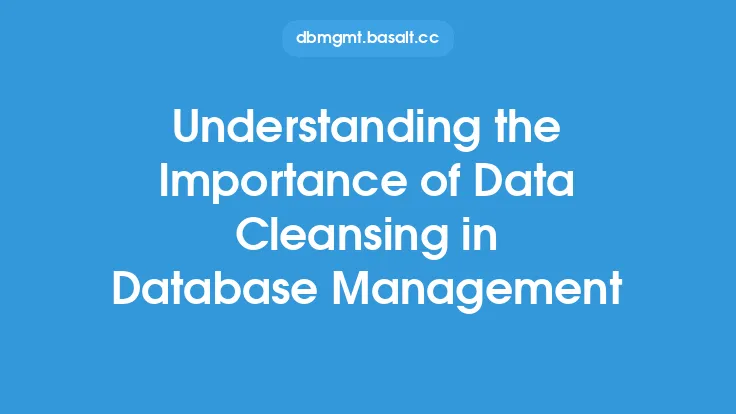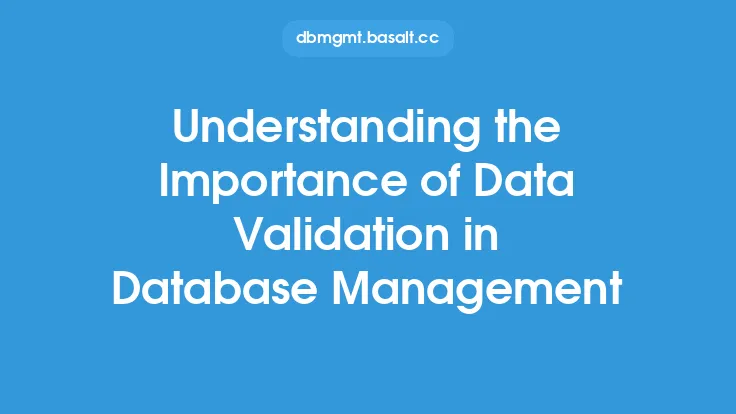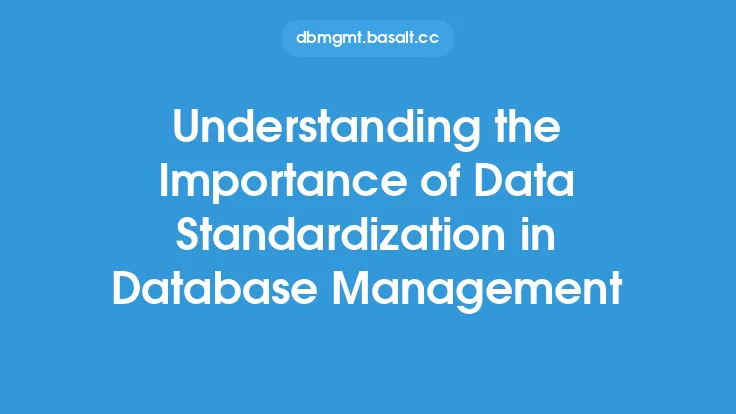Data formatting is a crucial aspect of database management that plays a significant role in ensuring the accuracy, consistency, and reliability of data. It involves the process of organizing and structuring data in a way that makes it easily readable, understandable, and accessible to users. Proper data formatting is essential for effective data management, as it enables users to quickly locate and retrieve the information they need, while also reducing errors and inconsistencies.
Introduction to Data Formatting
Data formatting refers to the process of converting raw data into a standardized format that can be easily understood and analyzed. This involves assigning a specific format to each data element, such as dates, numbers, and text, to ensure consistency throughout the database. Data formatting is not just limited to the visual representation of data, but also involves the underlying structure and organization of the data. A well-formatted database is essential for efficient data retrieval, analysis, and reporting.
Benefits of Data Formatting
Proper data formatting offers numerous benefits, including improved data accuracy, reduced errors, and enhanced data consistency. When data is formatted consistently, it becomes easier to identify and correct errors, which in turn improves the overall quality of the data. Additionally, well-formatted data enables users to quickly locate and retrieve the information they need, saving time and increasing productivity. Data formatting also facilitates data analysis and reporting, as it enables users to easily extract and manipulate data to gain insights and make informed decisions.
Types of Data Formatting
There are several types of data formatting, including character formatting, numeric formatting, and date formatting. Character formatting involves formatting text data, such as names, addresses, and descriptions, to ensure consistency in spelling, punctuation, and capitalization. Numeric formatting involves formatting numbers, such as integers, decimals, and currencies, to ensure consistency in notation and precision. Date formatting involves formatting dates and times to ensure consistency in notation and format. Each type of data formatting has its own set of rules and conventions, and it is essential to apply these rules consistently throughout the database.
Data Formatting Techniques
There are several data formatting techniques that can be used to improve the quality and consistency of data. These include data validation, data normalization, and data transformation. Data validation involves checking data for errors and inconsistencies, and correcting or rejecting data that does not meet the required standards. Data normalization involves organizing data into a standardized format, such as converting all dates to a standard format. Data transformation involves converting data from one format to another, such as converting text data to numeric data. These techniques can be used individually or in combination to improve the quality and consistency of data.
Best Practices for Data Formatting
To ensure effective data formatting, it is essential to follow best practices, such as establishing clear formatting standards, using consistent notation and terminology, and validating data for errors and inconsistencies. Additionally, it is essential to document data formatting rules and conventions, and to provide training and support to users to ensure that they understand and apply these rules consistently. By following these best practices, organizations can ensure that their data is accurate, consistent, and reliable, and that it can be easily accessed and analyzed to support business decision-making.
Common Data Formatting Challenges
Despite the importance of data formatting, many organizations face challenges in implementing and maintaining effective data formatting practices. These challenges include lack of standardization, inconsistent notation and terminology, and inadequate data validation and quality control. Additionally, many organizations struggle with data formatting issues related to data migration, integration, and exchange, such as converting data from one format to another or integrating data from different sources. To overcome these challenges, organizations must establish clear data formatting standards, provide training and support to users, and invest in data quality and validation tools and techniques.
Conclusion
In conclusion, data formatting is a critical aspect of database management that plays a significant role in ensuring the accuracy, consistency, and reliability of data. By understanding the importance of data formatting, and by following best practices and techniques, organizations can ensure that their data is well-formatted, accurate, and reliable, and that it can be easily accessed and analyzed to support business decision-making. Effective data formatting is essential for efficient data retrieval, analysis, and reporting, and it is a key component of a well-designed and well-managed database.





